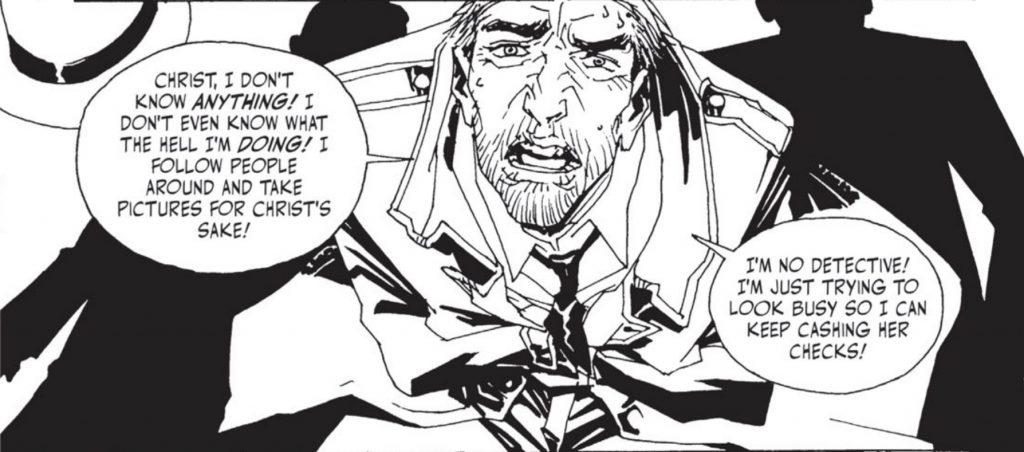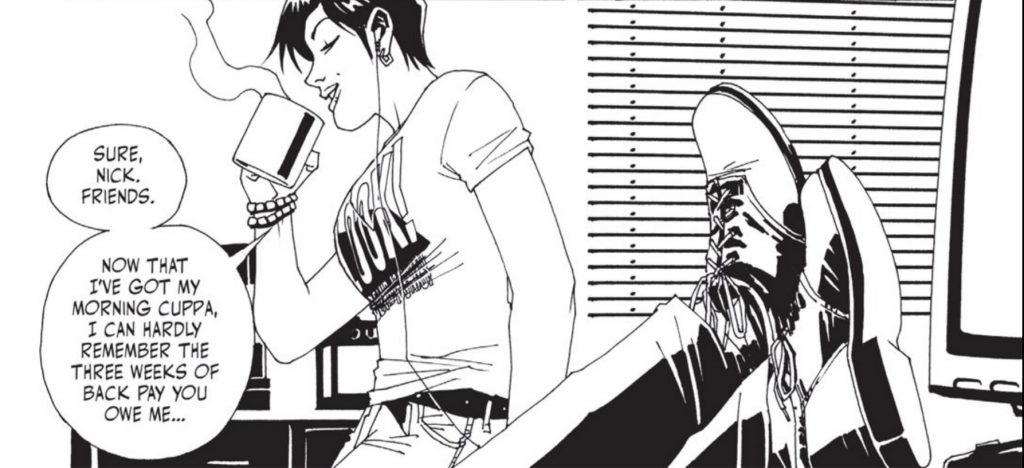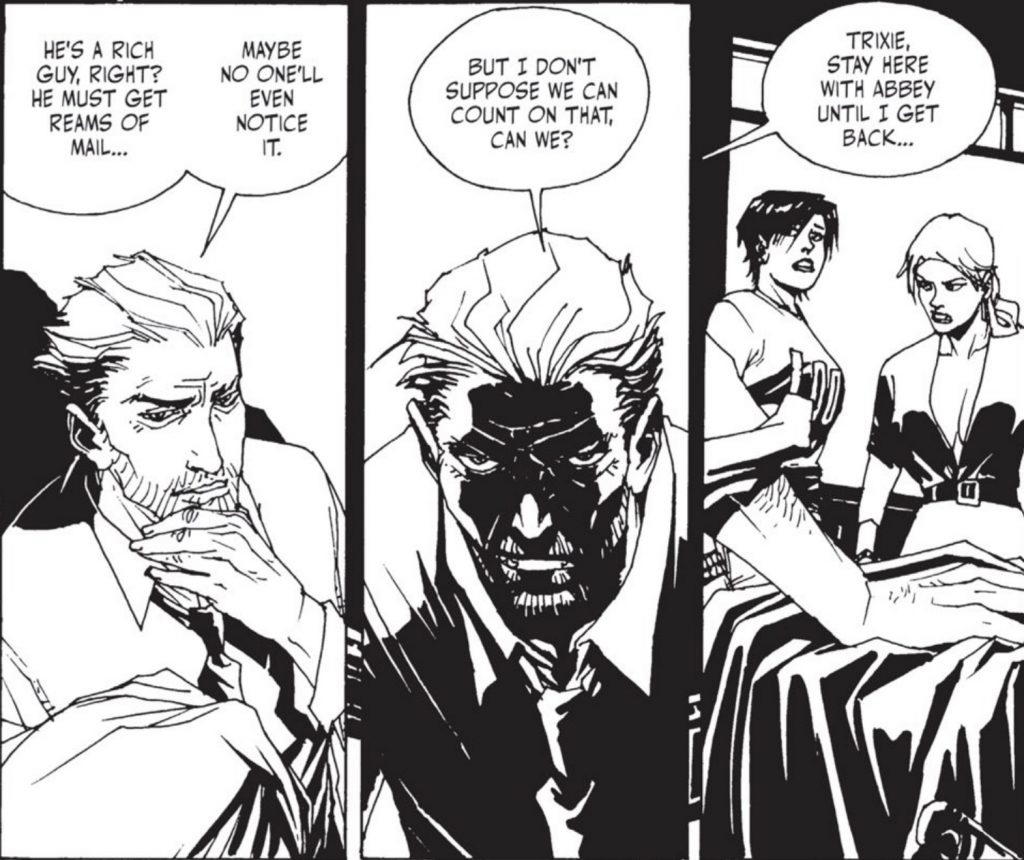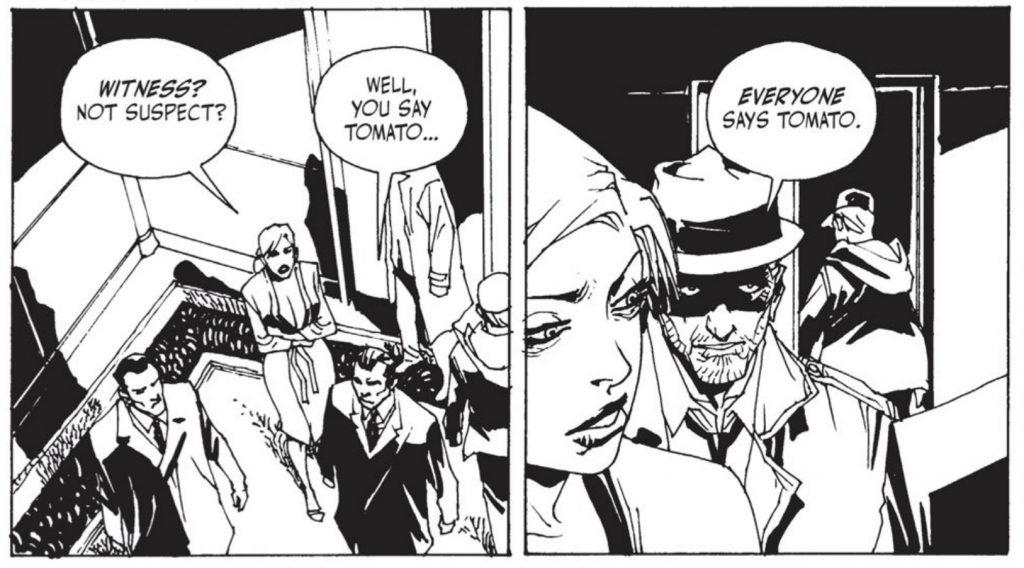
Max Cage is the heroic alter ago of the mild-mannered reviewer and commentator of comics, crime and all manner of pulp. He knows you have better things to do than read his musings but can’t imagine exactly what that could be.

Some of the first crime stories I experienced were from the venerable private eye genre; in fact the acknowledged granddaddy to the mystery story, Edgar Allan Poe’s Murders In The Rue Morgue is as much a P.I. story as anything. Oh, and Consulting Detective is just super British-y for Licensed Dick, I shit you not, Sherlock.
Then there’s noir, stories of relentless doom unfolding, terrible events snowballing out of control, or small moments of weakness ultimately delivering outsized consequences.
Noir is Kafka, if Gregor Samsa had somehow chosen to become the beetle to hide out from gambling debts, only to discover that the beetle is wanted for a murder rap.
Private eye stories lend themselves well to many noir elements, usually found in the character flaws of the dick themselves as much as the corrupt and pitiless environment in which they operate. Private eyes are independent, detached from traditional law enforcement, making them unpredictable, often wild-card elements. Their very presence near a police investigation promises conflict to come. Too, they are frequently broken people, brought low and aching for redemption. Answerable to only their clients (and if even then), they are seekers of truth …and sometimes they’re re just a schmoe who takes snaps of spouses being naughty.

In LIAR’S KISS we are given solid private eye noir updated for modern times, while paying careful homage to classic shamus and noir story structure and stylings. Nick Archer (a nice little nod in several directions, there) is our P.I. hero …well, protagonist, at least. He’s a curtain peeper and not very good at it. He hasn’t paid his assistant in weeks (another nice nod to tradition), and his recurring bread-and-butter gig is spying on a billionaire’s wife for possible infidelity. Infidelity that he’s actually committing with her while faking photographic proof of innocence and chastity for her husband.
Don’t inspect that logic too closely and chalk it up to the weird paranoia that infects the uber-wealthy set. It’s gets us off to the races.

In true noir fashion, this becomes a key element after, in another pitch-perfect noir beat, the billionaire client husband is found murdered! Wife Abbey becomes the prime suspect, not because her cheating is revealed, but just because she’s the wife, I guess. Archer’s her alibi, which is as much a problem as a boon, then there’s twists and turns a’plenty, enough to do the genre quite proud.
Tropes are respectfully updated to accommodate a more or less contemporary setting; spunky assistant Trixie might have punky hair and a tight tee shirt, a clunky monitor on her desk and never really answer the phone, but she’s as familiar to the genre as Archer’s retro coat and hat. Her playful banter with her boss is on point and a highlight of the story.

I wish the clever wordplay could have continued to Archer’s interactions with Abbey, but there’s no Walter Neff/Phyllis Dietrichson-style tennis match of barbed innuendo with those two. In fact Abbey becomes an increasingly hard character to like, which could suggest a bad fate, good character work, or both. I ain’t spoiling.
Archer could come clean and work with the police, but then we wouldn’t have a noir story, so he lets Abbey hire him. Obviously he’s not too concerned about conflicts of interest or questions of ethics — then again, he is her alibi and certain of her innocence. Again, don’t squint too hard, we’re having fun!
We have a transformation from bottom-feeding slacker to someone with something to prove. All signs are of redemption around the corner and yes, that feels just awesome! You have a detective and you have a murder, we’re gonna do this! The math ain’t hard.
If you’re also very terribly worried for everyone, then my friend you understand noir.
Archer starts generally blundering around and tampering with the police investigation, earning himself a beating. He gets thrown out (bodily, of course) of the dead billionaire’s office, then the business manger reverses course and gets suspiciously cooperative. Somehow Archer manages to make surprising progress with his investigation before eventually getting himself …well. That would be telling, wouldn’t it? Shall we say, ‘in too deep’?

LIAR’S KISS is 120 pages of a twisty love letter from Eric Skillman and Jhomar Soriano. Their bios from this, the only print edition of the book, tell me that at time of publication in 2011 Skillman is a Brooklyn dude with little in the way of previous comics credits. I love the fresh voice newcomers bring and plus, this guy really gets it. Sadly for the crime comics community but surely good for Skillman, it appears he devotes most of his talent to his successful day job doing high-end art direction for Criterion.
I loved coming across this beamingly proud post on a Criterion blog when the book was released. It’s charmingly exuberant and proud of their colleague’s accomplishment, and I can so get behind that right now. Good on you, Eric’s Criterion Family!
Jhomar Soriano is a Filipino artist on the manga scene, though there’s nothing about the book which really screams ‘manga’. I’m selfishly happy about that, since most manga art styles aren’t to my taste, but please don’t think I’m throwing shade! #Respect #Manga
Amazing things can happen when talent from different cultures and styles collaborate, and crime comics is an ideal platform, as we’ll continue to see in future reviews. You may even see some manga show up, who knows? It’s not my thing, but that doesn’t mean I never.
Soriano’s art style features the kind of line work that appears simple at first but reveals its storytelling utility over the course of the tale. Simple-seeming faces are rendered with convincing acting and expressions, fine and consistent character lines making them distinct and relatable. Soriano leans on heavy shadows to further the noir atmosphere, from stylized accent shadows to full-on chiaroscuro. Tricky to pull off and so rewarding when successful!

Flashbacks are another solid tradition in noir storytelling, and neither Skillman nor Soriano disappoint in how they bind the flashback narrative to the now, also artfully distinguishing past from present. Moody and rendered in a soft ink wash, the flashbacks are a distinctive departure from the stark blacks and cold absence of shading in the primary narrative. It’s nice to see Soriano flex some different art muscles, in the process.
Of course, the flashbacks are technically character dialogue illustrated and not necessarily reflecting the narrative ‘reality’, so when learning the sad history we also have to consider the source, so to speak.

Published in 2011 by Top Shelf Productions in one of those nifty literary-comic size hardcovers that makes you feel fancy to own, LIAR’S KISS is a breezy 120 black-and-white pages of bad choices, hidden motives and shady morality. In a perfect world, you might come across this book in the Mystery section of a bookstore, but few crime graphic novels really get noticed past the admittedly not-huge population at the intersection of crime fan and comics reader.
As far as I know, this was the only print edition produced, but they’re easily available on the aftermarket. Your local comics shop might have a copy but if not, try the obvious sources, eBay and online used-book sellers. You’ll find a copy easily and probably for dirt cheap. If you want some dirty for your digital device, ComiXology/Kindle Comics has it cheap for purchase and as a free borrow for Unlimited or Prime subscribers.
Hey, some things don’t set the world on fire, that just means there’s numberless quirky gems waiting to be discovered! I discovered LIAR’S KISS and I’m pleased to share it with you.

Until next time, as the newly emancipated Winnie the Pooh once said, “How lucky I am to have something that makes saying goodbye so hard.”
Max Cage, 2022
Nick Archer isn’t much of a detective, but when the client turns up dead, his cheating wife is the prime suspect and it’s up to Nick to clear her — except Nick has an agenda of his own.

Max Cage is the heroic alter ago of the mild-mannered reviewer and commentator of comics, crime and all manner of pulp. He knows you have better things to do than read his musings but can’t imagine exactly what that could be.